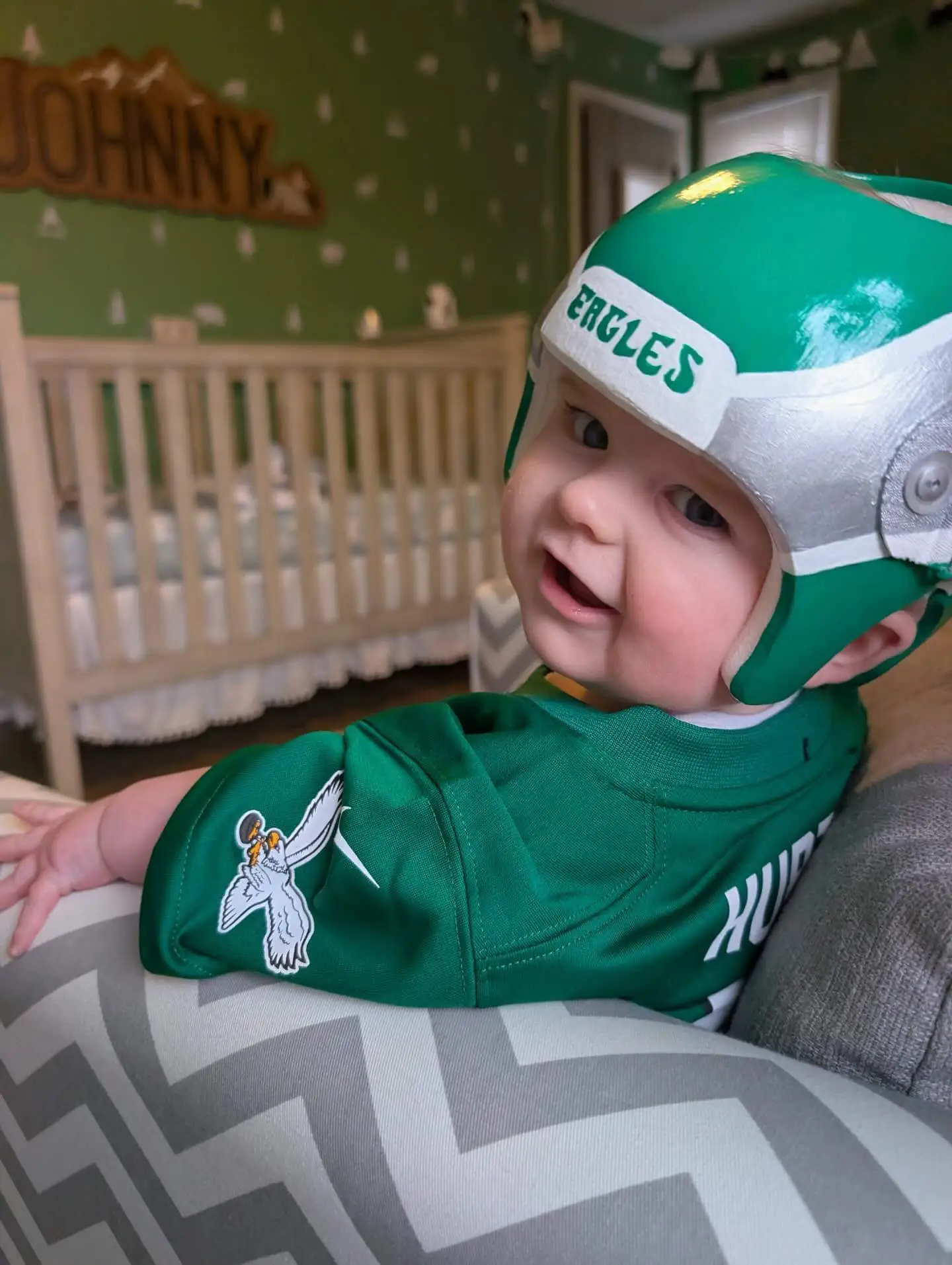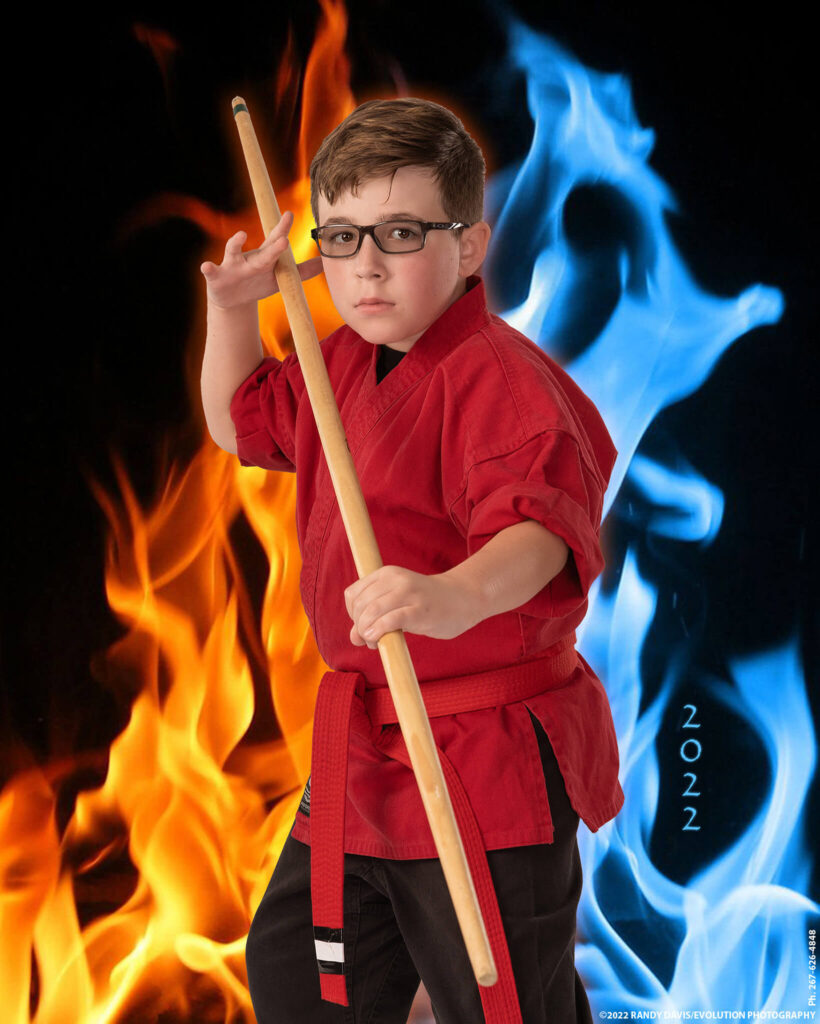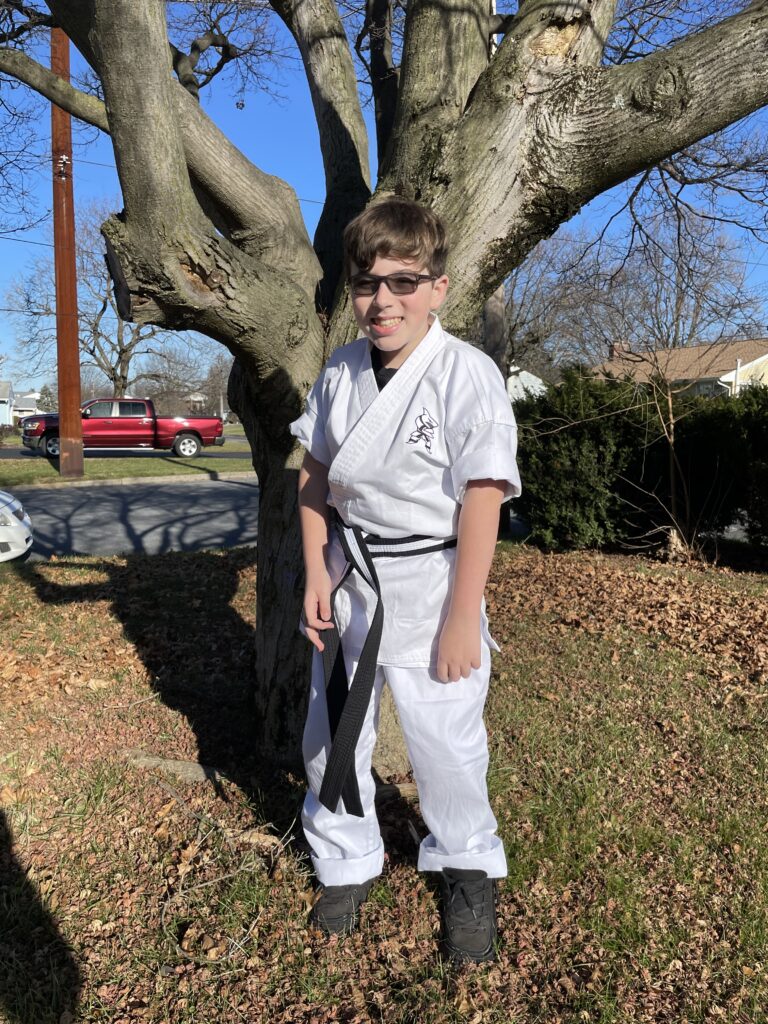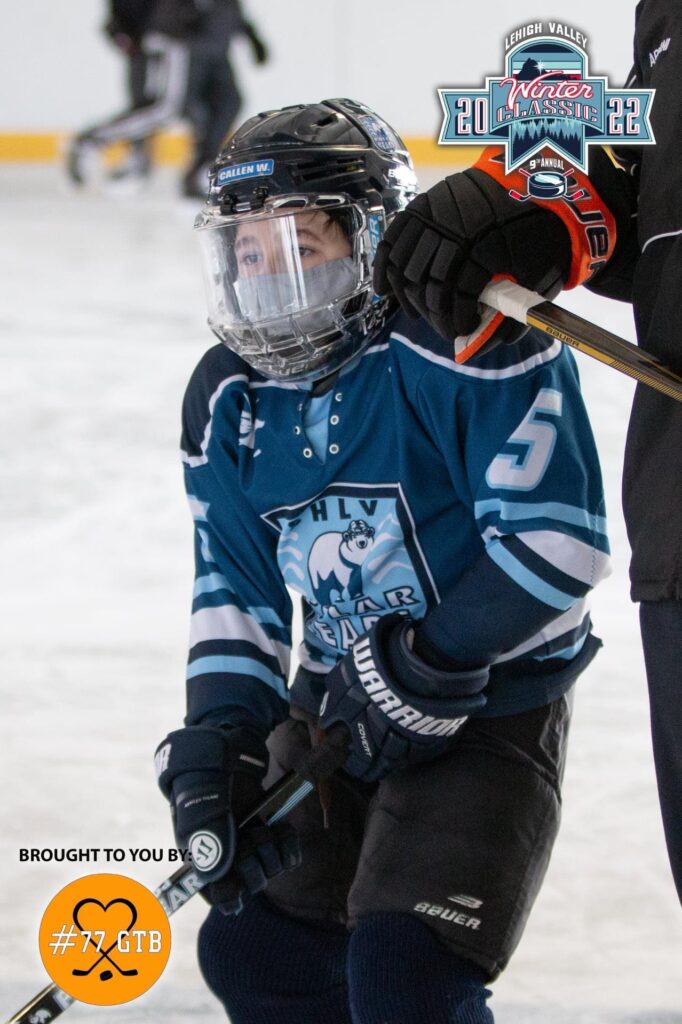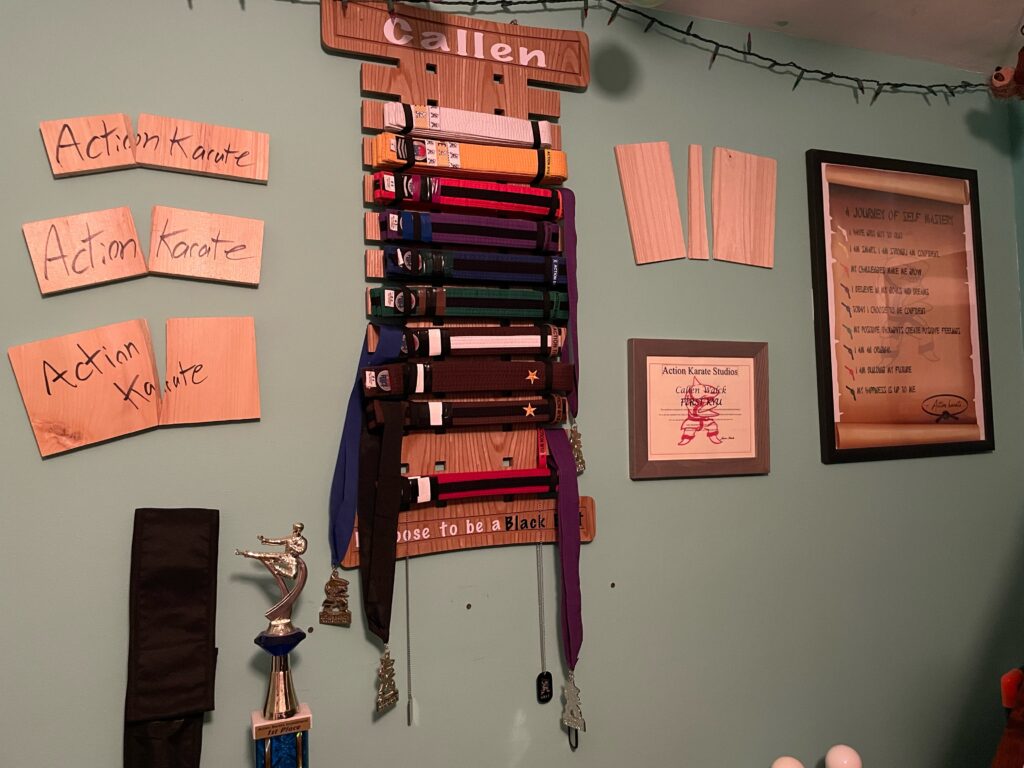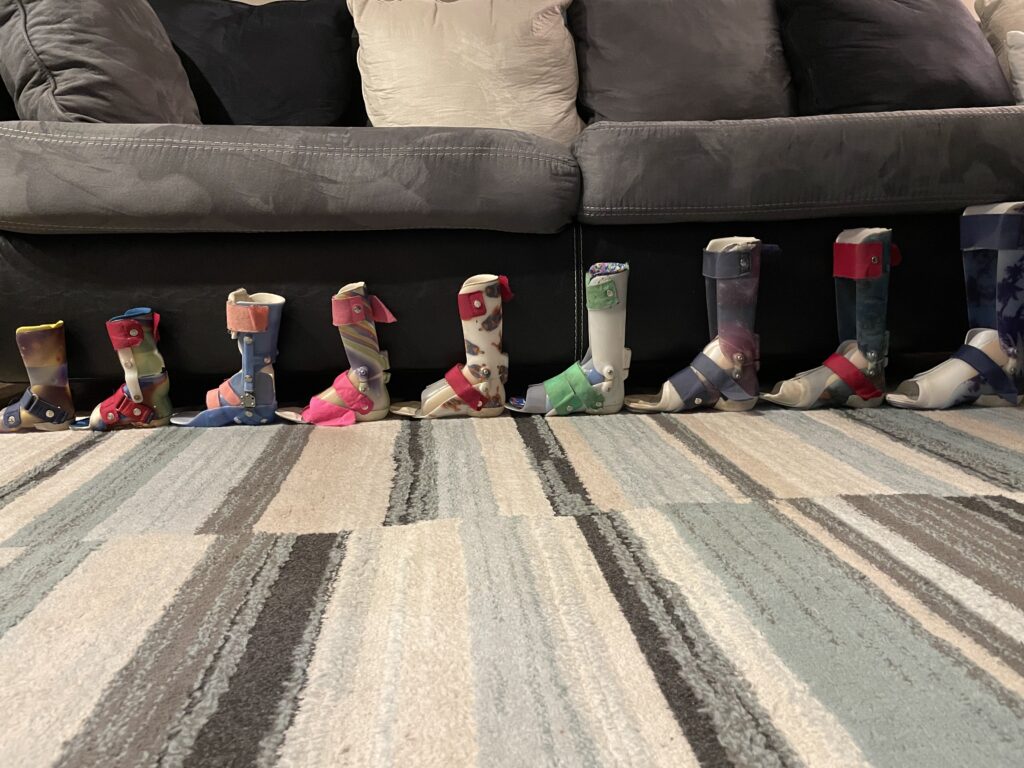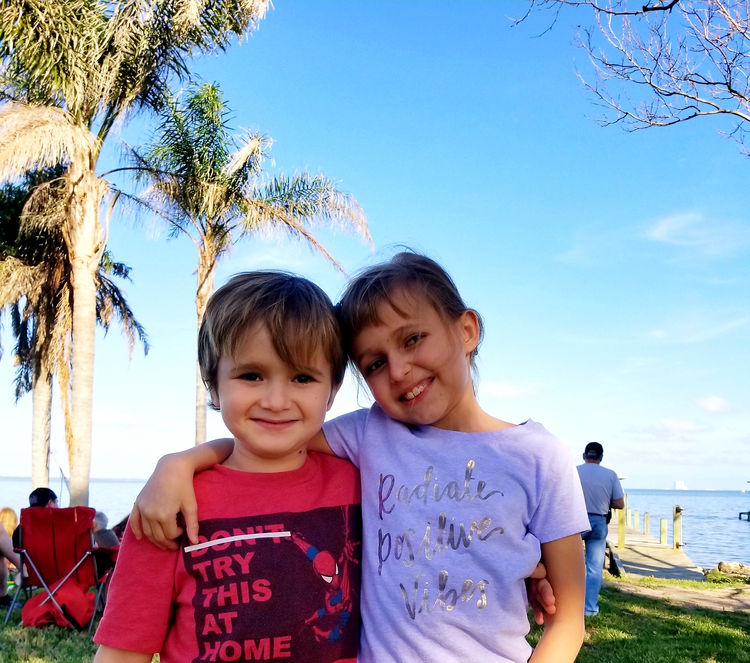Callen’s interest in karate developed out of the blue about three years ago, when he asked Jamie if there were some kind of karate school that would be a good fit for him.
Action Karate in Quakertown was just that kind of school, where the leaders effectively adapt performance goals and work with Callen at his functional level, Jamie reports.
“The only thing they’ve had to adapt for him are some of the exercises he is unable to do—like pushups and sit-ups, for example. They allow him to do pushups against the wall; he can do squats instead of sit-ups. He must still do the required exercises, but they’re modified to match his physical capabilities.”
She explains that participants don’t spar with each other, “But he learns self-defense techniques that combine different types of punches. Students learn a new skill or combination they practice for three weeks before earning their stripe. Each student has to earn three stripes before he can advance to the next belt level, and each belt level achieved earns a certificate explaining the meaning of that belt color and level. Ten belt levels must be mastered before one can earn a black belt.”
Callen began his pursuit of the black belt in February of 2020—just before covid hit. It took him 2 ½ years to achieve his goal. As Callen begins the journey to earn his Senior black belt, his classes will again progress through the same ten colored belt levels, but from a Senior perspective.
So far, Callen has competed in 3 karate tournaments showcasing his weapon katas and punch combinations. He has earned a first-place trophy, two gold medals, and one silver medal.
For Callen, karate builds confidence and character and recognizes commitment and self-discipline. It also offers him opportunities to mentor younger children aged 3-6 in the Ninja Sharks program.
It has also built a remarkably self-possessed, confident, and articulate young man who was recently invited to Moravian University, where he addressed a class of adult students studying to become occupational therapists—and provided answers, explanations, and insights into CMT treatment and methodology from a juvenile patient’s perspective—without a trace of shyness.
